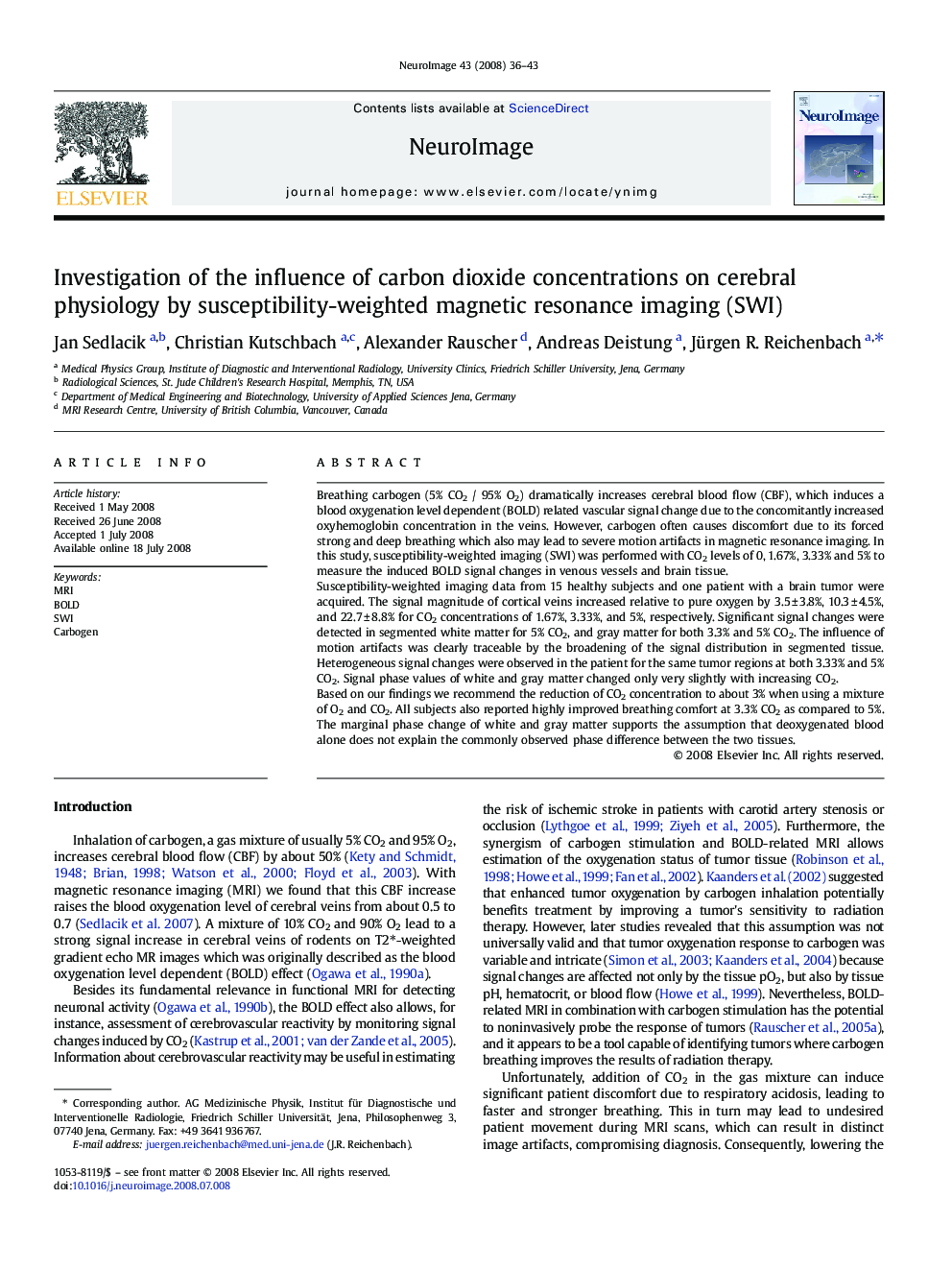| Article ID | Journal | Published Year | Pages | File Type |
|---|---|---|---|---|
| 3072793 | NeuroImage | 2008 | 8 Pages |
Breathing carbogen (5% CO2 / 95% O2) dramatically increases cerebral blood flow (CBF), which induces a blood oxygenation level dependent (BOLD) related vascular signal change due to the concomitantly increased oxyhemoglobin concentration in the veins. However, carbogen often causes discomfort due to its forced strong and deep breathing which also may lead to severe motion artifacts in magnetic resonance imaging. In this study, susceptibility-weighted imaging (SWI) was performed with CO2 levels of 0, 1.67%, 3.33% and 5% to measure the induced BOLD signal changes in venous vessels and brain tissue.Susceptibility-weighted imaging data from 15 healthy subjects and one patient with a brain tumor were acquired. The signal magnitude of cortical veins increased relative to pure oxygen by 3.5 ± 3.8%, 10.3 ± 4.5%, and 22.7 ± 8.8% for CO2 concentrations of 1.67%, 3.33%, and 5%, respectively. Significant signal changes were detected in segmented white matter for 5% CO2, and gray matter for both 3.3% and 5% CO2. The influence of motion artifacts was clearly traceable by the broadening of the signal distribution in segmented tissue. Heterogeneous signal changes were observed in the patient for the same tumor regions at both 3.33% and 5% CO2. Signal phase values of white and gray matter changed only very slightly with increasing CO2.Based on our findings we recommend the reduction of CO2 concentration to about 3% when using a mixture of O2 and CO2. All subjects also reported highly improved breathing comfort at 3.3% CO2 as compared to 5%. The marginal phase change of white and gray matter supports the assumption that deoxygenated blood alone does not explain the commonly observed phase difference between the two tissues.
